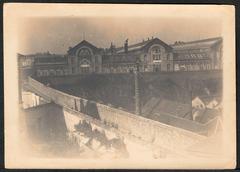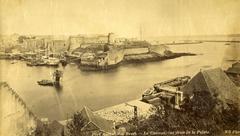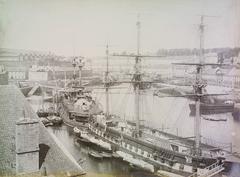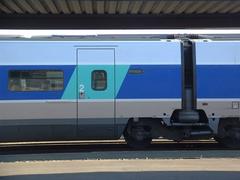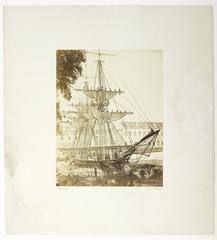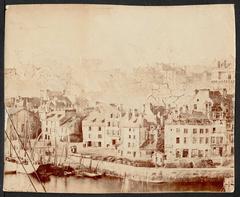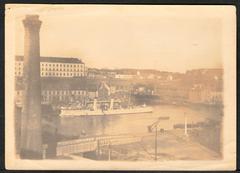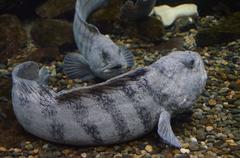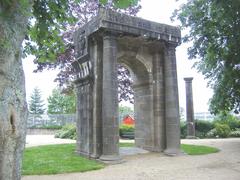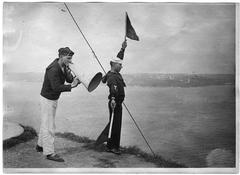Visiting the Bust of Kosa Pan in Brest, France: Complete Guide
Date: 14/06/2025
Introduction
The Bust of Kosa Pan in Brest, France, stands as a tangible symbol of the enduring relationship between France and Thailand. Erected to commemorate the watershed moment when the Siamese embassy first arrived in France in 1686, the monument honors Kosa Pan, the chief ambassador sent by King Narai of Ayutthaya to the court of King Louis XIV. Located near the intersection of rue Louis-Pasteur, boulevard Jean-Moulin, and rue Ducouëdic—historically known as “Bas de Siam”—the bust is a testament not only to diplomatic history, but also to Brest’s multicultural legacy. This comprehensive guide details the historical significance, practical visitor information, cultural context, and nearby attractions, ensuring you make the most of your visit (Silkworm Books; The Nation Thailand; Gavroche Thaïlande; Wikipedia).
Table of Contents
- Kosa Pan: The Man Behind the Embassy
- The 1686 Siamese Embassy: Context and Impact
- Arrival in Brest: A Historic Moment
- The Bust: Creation, Inauguration, and Preservation
- Visiting the Bust: Location, Hours, and Accessibility
- Nearby Attractions and Cultural Highlights
- Events, Guided Tours, and Community Engagement
- Essential Visitor Tips
- Frequently Asked Questions (FAQ)
- References and Further Reading
Kosa Pan: The Man Behind the Embassy
Kosa Pan, also known as Ok-Phra Wisut Sunthon, emerged as a pivotal figure in late 17th-century Siamese diplomacy. Fluent in multiple languages and highly skilled in international relations, he was selected by King Narai to lead the 1686 embassy to France. Kosa Pan’s diplomatic acumen and charisma left a strong impression in Europe, and after returning to Siam, he continued to serve as phra khlang (Minister of Foreign Affairs and Trade) (Silkworm Books).
The 1686 Siamese Embassy: Context and Impact
The 1686 embassy was Siam’s second official mission to France, following the earlier 1684 delegation. Its objectives were ambitious:
- Propose a lasting alliance between Siam and France.
- Foster military and commercial cooperation.
- Initiate cultural and religious exchanges.
- Return French envoys who had previously visited Siam.
Arriving in Brest, the embassy—comprising Kosa Pan, two co-ambassadors, and a retinue including Father Guy Tachard—captured public imagination with their attire and ceremonies (Wikipedia; The Nation Thailand). The French fascination with Siamese culture spurred trends in art and textiles, most notably the adoption of “Siamoise” fabrics. The embassy’s reception at Versailles by Louis XIV, and the resulting cultural and political connections, marked the start of a dynamic era of Franco-Thai relations (Quod.lib.umich.edu).
Arrival in Brest: A Historic Moment
Brest’s pivotal role as the entry point for the Siamese embassy is memorialized in the city’s geography—Rue de Siam, named in honor of the delegation, remains a central thoroughfare. The embassy’s landing at the confluence of Rue Ducouédic, Rue Louis-Pasteur, and Rue Jean-Moulin, in what is now the “Bas de Siam,” was met with considerable excitement and curiosity. The event is vividly chronicled in contemporary accounts, which describe the crowds and the pageantry surrounding the embassy’s arrival (Le Télégramme; Gavroche Thaïlande).
The Bust: Creation, Inauguration, and Preservation
Creation and Significance
Commissioned to mark the 333rd anniversary of the embassy, the bronze bust was crafted by Bangkok-based sculptor Wachara Prayookum and sits on a granite pedestal by local stonemason Christophe Chini. The project, spearheaded by the Association of Teachers of the French Language in Thailand (ATPF) under the patronage of Princess Maha Chakri Sirindhorn, underscores the enduring commitment to Franco-Thai friendship (Gavroche Thaïlande; Wikipedia).
Inauguration and Community Attachment
The monument was inaugurated on February 15, 2020, with a ceremony featuring Thai and French dignitaries, traditional performances, and a blessing from Princess Sirindhorn (Wiki-Brest). In 2024, the bust was briefly stolen but quickly recovered, prompting improved security measures and reflecting the strong community attachment to this symbol (Le Télégramme).
Visiting the Bust: Location, Hours, and Accessibility
Exact Location
The bust is situated at the intersection of rue Louis-Pasteur, boulevard Jean-Moulin, and rue Ducouëdic, close to the terminus of rue de Siam and the Brest téléphérique station (Wiki-Brest). This area is a vibrant part of the city, rich in history and culture.
Alt text: Map highlighting the intersection near rue de Siam where the Bust of Kosa Pan is located in Brest.
Hours and Fees
- Accessibility: 24/7, no entrance fee.
- Wheelchair Access: The site is fully accessible, with paved sidewalks and nearby public transport.
- Travel Tips: Best viewed during daylight hours; combine your visit with a stroll along Rue de Siam or a ride on the téléphérique for panoramic city views.
Nearby Attractions and Cultural Highlights
While visiting the bust, consider exploring these highlights:
- Château de Brest: A historic fortress and the National Maritime Museum, offering insights into Brest’s naval past (The Crazy Tourist).
- Jardin des Explorateurs: A park celebrating the city’s explorers.
- Rue de Siam: The city’s historic and commercial artery, lined with shops, cafes, and cultural venues.
- Les Ateliers des Capucins: A repurposed naval workshop now serving as a cultural and commercial center.
Events, Guided Tours, and Community Engagement
The bust is a focal point for Franco-Thai commemorations, including annual ceremonies, cultural festivals, and educational activities. Academic institutions and cultural organizations often organize guided tours and educational programs that include the monument. Information on upcoming events is available from the Brest Tourist Office and local Thai community associations.
Essential Visitor Tips
- Language: French is predominant, but English is widely spoken in tourist areas. Plaques at the monument include information in French, English, and Thai.
- Weather: Brest’s maritime climate can be rainy—carry suitable clothing.
- Photography: Permitted and encouraged.
- Respect: The bust is a symbol of international friendship. Please be respectful, especially during ceremonies.
- Accessibility: Paths and nearby facilities are wheelchair-friendly; public restrooms are available close by.
Frequently Asked Questions (FAQ)
Q: Is there a ticket or entry fee?
A: No, the bust is outdoors and free to access.
Q: What are the best visiting hours?
A: The monument is accessible 24/7, but visiting during daylight is recommended.
Q: Is guided interpretation available?
A: The bust is included in many city walking tours. Check with the Brest Tourist Office for schedules.
Q: Is the site accessible for wheelchair users?
A: Yes, the paths and area are accessible.
Q: What is the bust’s historical significance?
A: It commemorates the 1686 Siamese embassy, a milestone in Franco-Thai diplomacy.
References and Further Reading
- Silkworm Books
- The Nation Thailand
- Gavroche Thaïlande
- Wikipedia: Siamese Embassy to France (1686)
- Le Télégramme
- Wiki-Brest
- Château de Versailles
- The Crazy Tourist
- Brest Tourism Office
By visiting the Bust of Kosa Pan, you engage with a unique chapter in global diplomacy and multicultural heritage. Combine your monument visit with explorations of Brest’s vibrant historical and cultural landmarks, and take advantage of digital resources and guided tours for a richer, more informed experience. For the latest updates, event information, and travel tips, download the Audiala app and follow Brest’s official tourism platforms.

